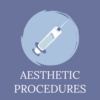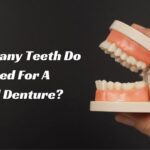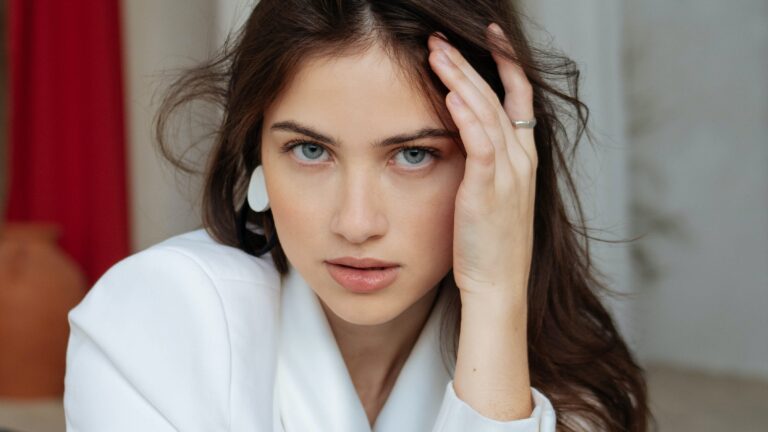Facelift surgery is the best option for rejuvenating the chin, cheeks, and other facial features. What is a vertical facelift? Selecting the proper facelift treatment might be challenging.
There are several options accessible for folks who are thinking about having a facelift, including vertical and conventional procedures. Knowing what is a vertical facelift, as well as its benefits and drawbacks, can eventually aid you in making the ideal choice of a facelift to assist a patient in repairing apparent indications of aging in the face.
What is a vertical facelift?

Sagging facial skin in the lower face can be treated with a vertical facelift. This allows patients to treat hanging skin around the jawline or chin, tighten firm, and rejuvenate the skin on the lower face.
What is a vertical facelift; its pros and cons?
Pros of a vertical facelift
A facial plastic surgeon makes microscopic incisions that run from behind a patient’s ear to the back of the hairline during a vertical facelift. The surgeon has easy access to the treatment region because of this. The vertical facelift procedure also aids the surgeon in minimizing the visibility of scars following facelift surgery.
A vertical facelift offers a safe, efficient method to improve facial appearance and minimal scarring, especially when a skilled facial plastic surgeon carries it out. A patient will also benefit from a balanced, natural-looking facial appearance for years following a vertical facelift.
Cons Of a vertical facelift
The main drawback of a vertical facelift is that it only treats the lower third of the face. So, a classic facelift might be a better choice if a patient is looking at ways to improve the appearance of the eyes, cheeks, forehead, and other areas in the middle and upper portions of the face.
Ideal candidates
Candidates for a vertical facelift are men and women who want to lessen aging symptoms in the lower face. A vertical facelift may be right for you if:
- Don’t smoke
- are in good health
- Do not have any underlying illnesses that could impede healing.
- Have realistic expectations of your results.
Best age for getting a vertical facelift
Although there is no minimum or maximum age for a vertical facelift, patients in their 40s frequently have the best outcomes. Nevertheless, a vertical facelift can be done at any age, depending on the patient’s needs. Patients often range in age from 35 to 60.
Healing and recovery
- Bandages are applied to the head and face immediately following the Vertical Facelift procedure and are left on for 24 hours.
- You can conceal stitches with a scarf until they are taken out.
- Dry out bandages and wounds till the stitches are taken out.
- Patients undergoing the Vertical facelift can anticipate swelling of the face and eyelids and discoloration, which is typical of all facial surgeries. This is most obvious on the second and third days and gets less noticeable after about a week. But your age, skin type, and capacity for healing also play a role in this.
- Between seven to fourteen days after having a facelift, the skin of the face can be covered in makeup up to the edge of the surgical scars.
Precautions
- It would be best to wait to color or strip your hair until your consulting doctor allows it. About two weeks after surgery, additional hair treatment operations may be performed.
- Do not allow someone to tug your hair or give you a hard scalp massage.
- If using a hair dryer, set the temperature to medium-cool.
- Wearing earrings is only advised once your earlobes have felt again.
- Immediately following your Vertical Facelift procedure, social activities might be restricted.
- For four to six weeks, you should refrain from strenuous exercise.
Make sure to ask all the post-surgical questions from your consulting physician, as he knows your condition the best.
FAQ’s
Would my scars from a vertical facelift be noticeable?
Scarring is unavoidable since a vertical facelift needs incisions. However, incisions for a vertical facelift are placed along the hairline to make them more easily hidden. Over time, scars will also disappear.
Are Vertical or Traditional Facelifts Safe?
A facelift is conducted only when a facial plastic surgeon determines that a patient is a good candidate for the procedure. Other treatment alternatives may be considered if the surgeon thinks a facelift poses a risk to the patient’s health and wellness.
When Can I Expect to See a Facelift’s Results?
During three months of therapy, the initial effects of a vertical or traditional facelift are typically seen. Following a facelift, healing can last up to six months, and it can take a while to see all of the procedure’s benefits.
Which facelift, a vertical one or a traditional one, is best for me?

Patients must carefully examine their facial rejuvenation treatment objectives before deciding whether to have a vertical or conventional facelift. The patient can then consult a facial plastic surgeon to see if facelift surgery can help them reach their objectives.
How much does a facelift cost?
Every other facial rejuvenation operation, including a vertical or classic facelift, will cost more or less, depending on the facial plastic surgeon doing the procedure. Thankfully, the surgeon goes over the expense of the process before it is carried out. This enables the patient to decide whether a cosmetic operation is within their financial reach.
Can any other operations be coupled with a vertical facelift?
Many individuals who have a vertical facelift desire to enhance other facial features. A vertical facelift is frequently paired with the following procedures:
- eyelid surgery (blepharoplasty)
- Rhinoplasty
- brow lift(forehead lift)
Are There Any Other Facelift Options Other than the Vertical Facelift?
There are numerous options for facial rejuvenation, including:
- A mid-facelift, also called a cheek lift, accentuates the lower eyelids and cheeks.
- Reshaping the nose or restoring its functionality – rhinoplasty.
- Botox: Botox is a non-surgical cosmetic rejuvenation procedure that stops the overuse of the muscles of the face, which would otherwise cause fine lines, wrinkles, and furrows.
- Cryoskin facial is a non-surgical option for facelift
Conclusion
Depending on the patient and their facial features, several treatments may be the best for facial rejuvenation. Nonetheless, patients can decide if one or more surgeries are required to restore their facial appearance by weighing their treatment alternatives. Knowing what is a vertical facelift and all about it will also help you decide if it is the right option.









